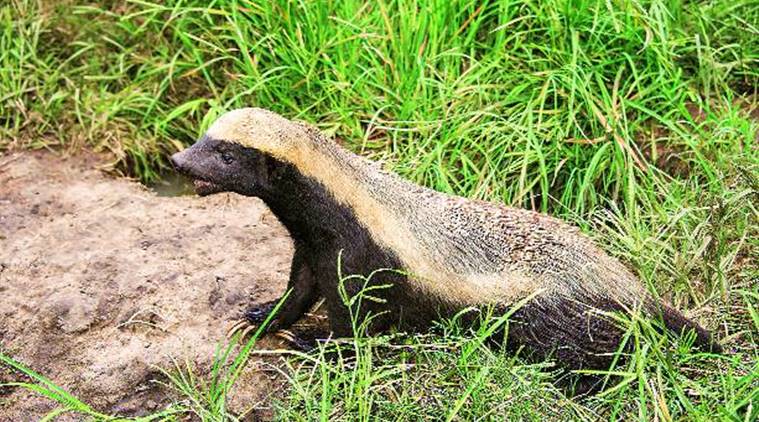Down in Jungleland: Badass Badger
There’s nothing sweet about the honey badger except its intention to kill. Be warned, this guy is no Gandhian and has retained the Guinness Book of World Records title as “the world’s most fearless creature” on what seems to be a permanent basis.

This cookie doesn’t crumble: The honey badger is a complete carnivore and will take down everything: lizards, birds, rodents and snakes. (Photo: Getty/Thinkstock Images)
I’ve always had a weakness for anything that punches (or bites, kicks or claws) above its weight and the honey badger or ratel is right up there at number one.
Be warned, this guy is no Gandhian and has retained the Guinness Book of World Records title as “the world’s most fearless creature” on what seems to be a permanent basis. There are conflicting reports about its attitude: some say this fellow will only attack in self-defence, or, if you intrude on its territory; others say it is always just spoiling for a fight and will tear after you, jaws agape, huge claws ready to rake your face off your skull and chew it up. The ladies, especially when with babies, are just as ferocious.
Honey badgers are found nearly all over Africa and south-west Asia and on the Indian subcontinent. They’re very adaptable and like dry areas as well as forests. In places (like India) where there is a lot of human disturbance, they have turned nocturnal, which has made studying them difficult.
However, it is not really a badger. It is more closely related to weasels, martens and ferrets — all part of that paranoid clan of animals with apoplectic anger management and feeding frenzy issues. It is about 2.5 to 3 feet long; and attractively two-toned in a shaggy pelt of silver grey (above) and black (beneath). The honey badger has small eyes (and poor eyesight), tiny ears and a very loose, hairy and rubbery skin — one of its chief defence mechanisms. When grabbed by the scruff of the neck by, say an outraged lion, there is enough play in the skin for the ratel to turn right around, wriggle free or bite off the lion’s face. It also has a stink gland near its rear end and sets off stink bombs to discourage predators. It has brains apart from brawn and is one of the elite few animals that make and use tools: for example, piling up logs of wood and rocks in an escape attempt.
The honey badger fears nothing. A lion investigating one for the possibility of a snack may have a swift and brutal vasectomy done to it as the creature lunges under it, jaws snapping and claws raking. They have been known to chase young lions away from their kills. They have an appetite for snakes (which make up, perhaps, a quarter of their diet) and will recklessly take on massively venomous ones like the cobra and puff adder (whose venom melts flesh). The thick fur prevents the fangs from sinking in and it is thought to have some resistance to snake venom (probably after having been bitten so many times!). It is a complete carnivore and will take down everything: lizards, birds, rodents, and, of course, snakes. Bee larvae is one of its favourite (sweet) dishes. It usually goes headlong into a beehive and snaffles up all the larvae and honey, while the maddened bees hum around, stinging it impotently.
There’s a fairy-tale that’s been around for a while about the ratel and the honeyguide — an African bird that also loves honey. It’s claimed that the bird locates a beehive and then sings to the ratel, indicating the location of the hive to it. The ratel trundles up, lays waste the hive, and gobbles up the honey. Out of gratefulness, it leaves a comb of honey for the bird. When biologists played the honeyguide’s song to the honey badger, the creature took absolutely no notice, so that sweet story went down the drain. If it gets into a chicken coop, it will kill far in excess of its need. Arrows and spears simply bounce off the animal’s fur and only a gunshot to the head might take it down.
The honey-badger is solitary, though sometimes they do meet up in foraging areas, rolling around and marking the place with their perfume. They live in self-dug holes (or usurp the holes of other animals) and are not very particular about the concept of a “home”. Babies are born (usually one, sometimes two) blind. After a six month gestation period and stay with their (single) moms for between 14 months and two years, they learn her ferocious ways.
Do not take panga with these guys. If irked, they will charge towards you, ready to attack. Also, they are good swimmers and can climb trees, and will not hesitate to shred your SUV’s tires.
And don’t — ever — call one “honey”!






















No hay comentarios:
Publicar un comentario